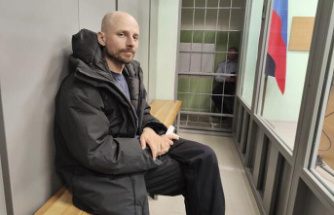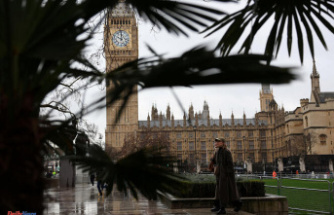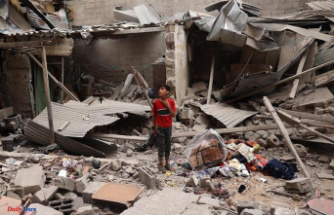Impunity is almost total and archaeologists are rebelling against these clandestine diggers accused of destroying an invaluable historical and cultural heritage and of fueling the trafficking of works of art, including to foreign countries.
In the region of Korçë, in the south-east of the small Balkan country, a vast ancient city of 20 hectares called Hija e Korbit, or "Shadow of the Crow", is covered with wild vegetation.
Nobody protects the multimillennial site perched on a hill. Here and there, we see holes, dug by hand or with a mechanical shovel. The ground is strewn with shards of ancient ceramics, witnesses of illegal excavations.
"There are people from all regions rushing to these places," local resident Axhem Lagështari, 60, told AFP. "Everywhere they dig, they rummage in the hope of finding gold, silver or other valuables."
Lusts were stoked after the chance discovery in the 1980s of 618 silver coins, among others of Alexander the Great, probably buried in the 3rd century BC, a treasure now on display in the National Bank Museum.
Archaeologists tell AFP that they have observed illegal excavations in almost all of the archaeological sites in the region, located high up and difficult to protect. They are rich in necropolises, fortifications or remains dating from the Bronze Age to the High Middle Ages.
"The problem is particularly worrying in Hija e Korbit, an important archaeological city not yet explored by archaeologists," laments Rovena Kurti, head of the prehistory department of the Institute of Archeology in Tirana.
- Destruction of scientific evidence -
"They damage the site and loot the heritage", continues the scientist, co-director of a Franco-Albanian archaeological mission working in the country.
The looters dig at night, using shovels, pickaxes, diggers. On social networks, offers of "gold, silver and valuables" detectors abound.
Beyond the flights, they destroy scientific data and remove objects from the environmental context which allows archaeologists to understand history, explains Cécile Oberweiller, former director of the Franco-Albanian mission in Korçë.
To the northeast of Tirana, in Brrar, the unrecognizable remains of an 11th or 12th century church and the gaping holes that disfigure the site testify to the greed of the looters.
The Church of the Blessed Virgin Mary, of which only a tombstone from 1201 has been saved, is nevertheless supposed to be protected by its status as a cultural monument.
"We can give it any name but in truth, it is currently only a ruin prey to looters", plagues Skender Muçaj, an archaeologist who fights to protect the place of which there will soon be nothing left.
The basement is freshly dug by people presumably eager to search ancient graves for things to sell.
"I come every Tuesday to pray to the Blessed Virgin Mary, she saved the life of my sick son but I was powerless to save his shelter," Nora Braia, 80, told AFP, hiding her tears from her eyes. trembling hands.
- "Close eyes" -
She is "sure" that one day the looters "will be pursued by misfortune".
But in the meantime, they seem to be operating without much hindrance. Scientists are calling for tough measures and better coordination between police, local authorities and cultural authorities to prevent the trafficking of objects, often by organized gangs.
The Albanian Minister of Culture assures AFP "to have reinforced the measures" to protect "the cultural heritage" and says to cooperate "with the other international organizations against the illicit traffic of cultural goods".
While there are no estimates of the market value of the looting market, researchers are certain that some stolen objects fuel international traffic, ending up in auctions, museums or private collections abroad.
"It's a fight that Albania cannot fight alone, the responsibility also lies with the authorities of other countries who turn a blind eye when these objects are exhibited in their museums", accuses Neritan Ceka, art historian.
The recent indictment in France of Jean-Luc Martinez, the former boss of the Louvre, the largest museum in the world, in an alleged trafficking of antiquities from the Near and Middle East, has brought to light this type of illicit trade.
The French archaeologist Pascal Darcque also denounces "the dubious practices of museums which supply themselves on (the antiquities market) without seriously worrying about the origin of the objects".
While almost all countries regulate research on their territory, "the objects that appear on the market today (...) are a priori suspect". "Their sale must be blocked and if their geographical origin can be established, restitution to the State in question must be organised".












